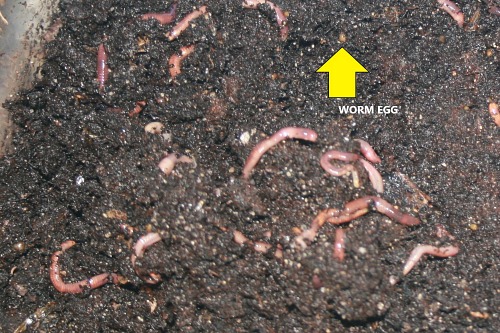Get Your Lawn in Top Shape with the Help of Lake Hickory Bait Grass Care Solutions
Get Your Lawn in Top Shape with the Help of Lake Hickory Bait Grass Care Solutions
Blog Article
Red Wigglers: The Unsung Heroes of Organic Waste Recycling
Red wigglers, or Eisenia fetida, offer as vital agents in the natural waste reusing process, transforming disposed of products right into valuable vermicompost. Their effective break down of raw material not just enhances soil quality however additionally adds to sustainable waste administration practices. As the world increasingly seeks services to fight waste build-up and enhance agricultural productivity, recognizing the function of these worms ends up being essential. What systems enable them to grow in compost environments, and exactly how can they be effectively utilized in both property and business setups? Exploring these inquiries reveals the wider implications of vermicomposting in our ecological landscape.
What Are Red Wigglers?
The amazing strength of red wigglers, medically called Eisenia fetida, emphasizes their critical duty in organic waste recycling. These tiny, reddish-brown earthworms are usually found in disintegrating raw material, such as garden compost stacks and manure lots. Lake Hickory Bait. Unlike various other earthworm varieties, red wigglers thrive in nutrient-rich atmospheres and are very effective at damaging down natural products, making them essential for vermicomposting

(Red Wiggler Express)In enhancement to their role in waste reduction, red wigglers add to soil health by boosting dirt framework and aeration through their delving activities (Lake Hickory Bait). Their existence in composting systems not only improves disintegration rates yet also advertises a lasting technique to lose administration, showing their significance in environmental preservation initiatives
Advantages of Composting With Worms
Composting with worms, especially red wigglers, uses numerous benefits that boost both waste administration and dirt health. Initially, these worms efficiently damage down organic waste, transforming it right into nutrient-rich vermicompost that enhances soil. This process increases disintegration, enabling a faster recycling of cooking area scraps and other natural materials compared to standard composting approaches.
Additionally, the vermicompost generated by red wigglers is teeming with advantageous microbes, which help boost soil structure, aeration, and wetness retention. This boosts the total health of plants, promoting vigorous development and increased returns in yards and agricultural setups. Moreover, the usage of worms in composting lessens the manufacturing of greenhouse gases, such as methane, adding to a much more sustainable waste administration system.

Exactly How to Beginning Vermicomposting
Developing a vermicomposting system is an uncomplicated process that can generate substantial advantages for both waste administration and soil enrichment. To begin, select an ideal container, such as a plastic container or wood box, with adequate air flow openings to make certain correct air flow. The measurements need to preferably be around 2 feet by 3 feet, permitting ample room for the worms to prosper.
Following, prepare bed linen material, which can be composed of shredded paper, cardboard, or coconut coir. This bedding ought to be dampened to create a suitable habitat for the worms. As soon as the bed linen remains in place, introduce red wigglers (Eisenia fetida) right into the container, usually around one pound of worms for every single square foot of area.
Following the positioning of worms, include natural waste, such as fruit and vegetable scraps, coffee grounds, and smashed eggshells. Prevent adding dairy products, meat, or oils, as these can produce smells and draw in parasites. Finally, position the bin in a shaded, temperature-controlled location to preserve optimal conditions for worm task. With these steps, you will successfully launch a vermicomposting system that adds to sustainable waste monitoring and improves your soil.
Keeping a Healthy Worm Bin
(Red Wiggler Express)Maintaining a worm bin thriving calls for regular interest and like make sure the wellness of the red wigglers and the efficiency of the composting process. Appropriate maintenance begins with checking the wetness levels; the container needs to perspire yet not waterlogged. A great guideline is to maintain an uniformity comparable to a wrung-out sponge.
Delicately blending the bed linen and food scraps every couple of weeks protects against compaction and makes sure that all worms have access to oxygen. In addition, it is crucial to feed the worms properly.
Temperature regulation is another crucial element. Red wigglers thrive in an array of 55 to 77 levels Fahrenheit. If the bin comes to be as well warm or cool, the worms might end up being worried - Lake Hickory Bait. Last but not least, regularly inspect for signs of health, such as worm population development and the existence of healthy and balanced spreadings. By diligently managing these elements, one can keep a robust and productive worm container.
Impact on Sustainable Living
The effective maintenance of a worm bin not just profits the health and wellness of red wigglers however likewise contributes significantly to lasting living practices. By recycling natural waste, such as cooking area scraps and yard debris, red wigglers help divert significant amounts of material from garbage dumps. This decrease in waste not just lowers greenhouse gas emissions but also decreases the environmental worry connected with waste monitoring.
Additionally, the castings created by red wigglers function as a nutrient-rich organic fertilizer, enhancing soil health and advertising plant development. This natural alternative to chemical fertilizers supports sustainable agriculture and gardening techniques, lowering dependence on synthetic inputs that can hurt environments. Furthermore, worm composting promotes understanding of waste administration, encouraging individuals and neighborhoods to adopt even more lasting behaviors.

Final Thought
In recap, red wigglers work as vital contributors to organic waste recycling with their reliable disintegration of organic products. Their capacity to generate nutrient-rich vermicompost enhances dirt wellness and sustains sustainable farming techniques. By incorporating vermicomposting into waste management strategies, individuals and areas can substantially minimize waste while promoting environmental sustainability. The duty of Eisenia fetida in fostering healthy ecosystems highlights the importance of these microorganisms in accomplishing sustainable living and boosting soil fertility.
Report this page